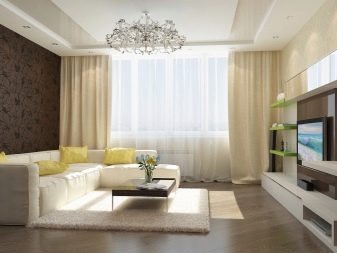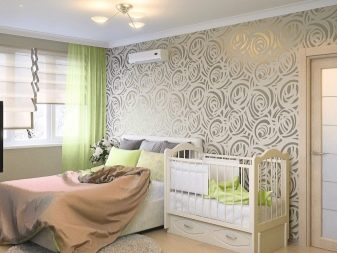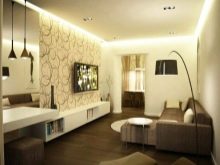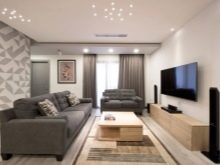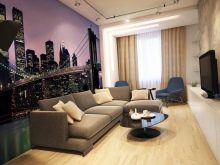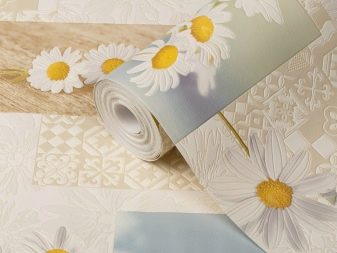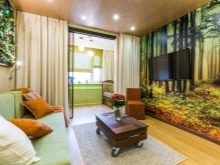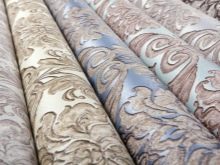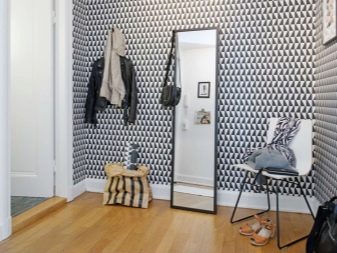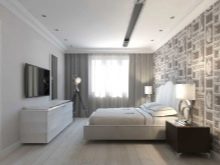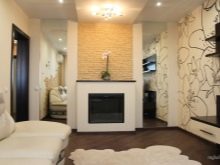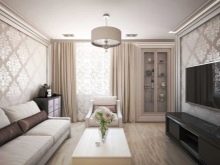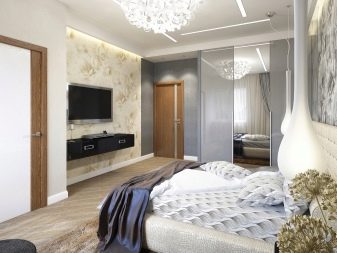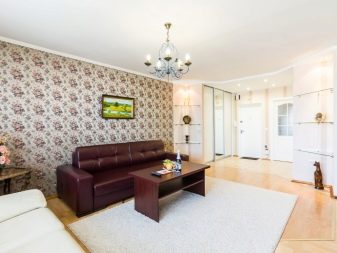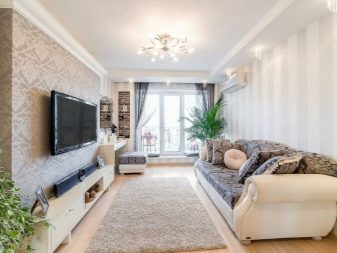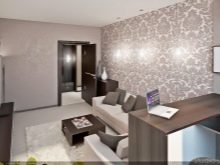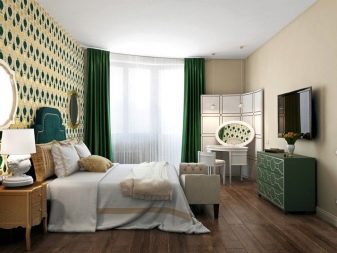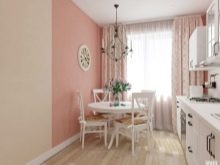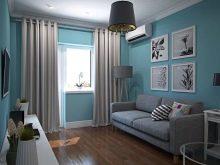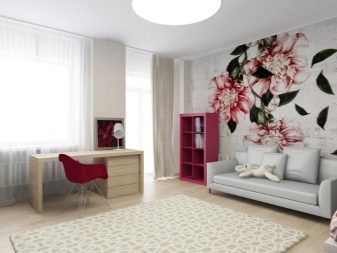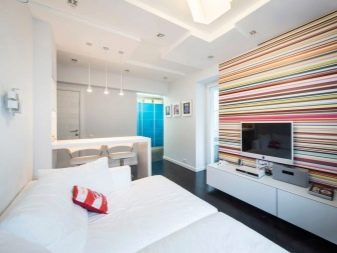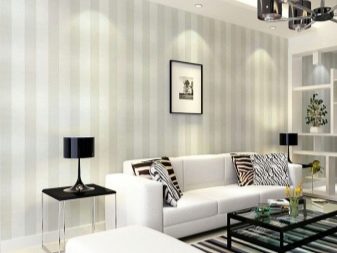Wallpaper in a studio apartment
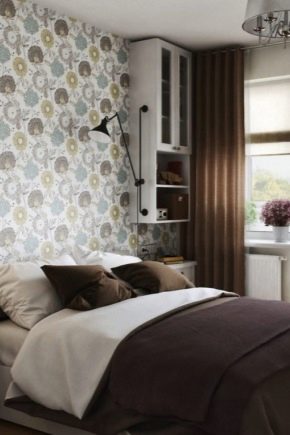
Apartment renovation often involves wallpapering, and this is where the problem arises. The fact is that the ability of wallpaper to radically change the appearance of a room forces you to be careful when choosing a decorative material. It is important not to be mistaken in quality and color, because such walls will surround the owner for a long time.
Views
Before you go to the building supermarket for wallpaper, in order to glue them in the "odnushka" and update the surrounding space, you need to solve two main questions for yourself:
- type of wallpaper;
- colors.
Of course, everyone has some preferences, favorite colors, but you shouldn't rush and base your choice only on what you like. First of all, you need to decide on the quality of the wallpaper. There are several types of such material.
- Paper. We can say that these are the progenitors of modern wall covering materials. Inexpensive, fragile, far behind modern trends, but still popular and in demand. We must pay tribute to the fact that their range is unusually wide and allows you to choose a pattern and color for every taste.
- Vinyl. More durable, they are characterized by increased moisture resistance, which allows them to be used in the kitchen and in the bathroom. The price is higher, but they do not fade and can be washed. Unfortunately, vinyl products have a very high coefficient of linear tension: they can disperse at the joints during sudden changes in temperature or humidity.
- Glass fiber. Designed for painting, they have many excellent qualities. Made of fiberglass, they prevent insects from breeding under them, they do not burn, they perform a reinforcing role, fastening microcracks. Durable and moisture resistant, they create a special indoor climate.
- Non-woven. Their characteristics are similar to those of glass fiber. No less durable, they have a reinforcing effect and do not lend themselves to deformation (compression-tension). Such wallpapers can also be intended for painting, but the assortment with prints is unusually rich.
- Photo wallpaper. They resemble large paintings, with their help you can "open a portal" from an apartment to the streets of Bahrain, to the white sand of a Mediterranean beach, admire forest landscapes, etc.
- The liquid wallpaper. A new word in interior design. They are applied with a roller, resemble decorative plaster, and have a variety of textures. Dust does not settle on such walls.
Knowing the types and features of various types of wallpaper, you can make a stylish living space out of a one-room apartment.
We decide on the purpose in the interior
A one-room apartment is, in any case, several rooms, so you need to decide in advance where exactly the wallpaper will be used, and in accordance with this, select the material.
- For the hallway, a dynamic print with small graphics is suitable, from which the eyes will not get tired in a confined space. She is quite capable of hiding doors, distracting eyes from cabinets and a sofa.
- In the living room, the print is chosen depending on the size. A small drawing visually expands the space, from a large one the effect will be the opposite.
- For the bathroom and kitchen, choose vinyl moisture-resistant wallpaper that is not afraid of water.
Choosing a color depending on the location of the windows
The design of a one-room apartment is sometimes much more difficult to accomplish than solving the same problem in a house with a large footage, where each room has a specific role: bedroom, kitchen, living room, nursery. In a 1-room apartment, almost all of these functions fall on one room, not counting the kitchen and bathroom, often combined with a toilet.
When deciding on natural light in an apartment, you need to remember the recommendations of designers: the main color should match the direction of daylight.
- With a meager flow of sunlight, light wallpaper is needed. Where windows face south, south-west, south-east, direct rays contribute to fading of paints. In this case, the choice of liquid wallpaper would be the ideal solution. If you still want paper options, then you should make a choice in favor of cold tones.
- The windows located on the west and east sides, according to the designers, prefer a pastel palette. On the east side, colder tones are used, and on the west, warm ones.
In addition to the location of the windows, you need to remember about the ratio of warm and cold tones. If, according to the design idea, cold and warm shades should be combined, then let them be in the same color scheme.
The use of contrasting patterns is allowed as decorative accents and for space zoning.
We combine tones with furniture and textiles
Beautiful textiles can be distinguished using the law of combining colors and shades. For example:
- deep green curtains and upholstery will look amazing on a sandy or golden background;
- purple or blue walls will favorably emphasize the yellow or milky shades of furniture;
- for pink textiles and furniture, pearl gray is the perfect contrast.
Catchy, with decorative elements, the setting will be clearly visible against the background of muted wallpaper with a dull pattern.
Room size and wallpaper style
Illumination, perception depends on the wallpaper in a one-room apartment. With the help of color and texture, you can visually adjust the space, make it larger. To visually expand the room, preference is given to cold light colors: gray, blue, green. Warm colors, on the other hand, visually diminish the room. These are, for example, terracotta, golden, orange, peach and other colors. These shades will make the room warm, they will fill it with coziness, security.
Low ceilings are easy to "lift" with wallpaper with vertical stripes, the color depends on the size of the room. If the opposite is true, and the task is to make a large room out of a small room with high ceilings, then use a horizontal strip. This visually stretches the length of the walls. Striped walls can be in the same color in different shades or bright, contrasting. The design of the combined striped, geometric, floral patterns looks interesting.
Using this simple knowledge, you can turn a small one-room apartment into a stylish, cozy home.
